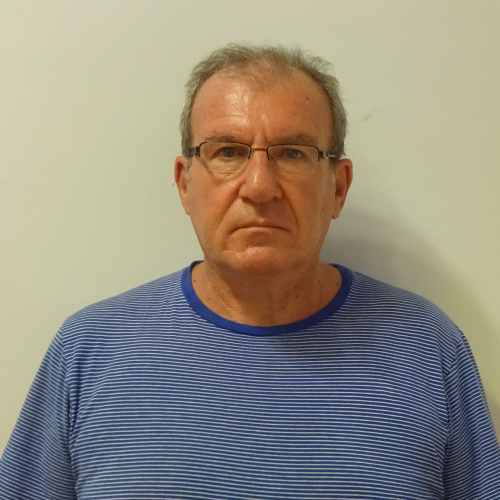Ο Κωνσταντίνος Βαρώτσης είναι Καθηγητής στο Τμήμα Χημικών Μηχανικών. Σπούδασε Χημεία και Φυσική ( BS, διπλή κατεύθυνση) και Μαθηματικά στο Πανεπιστήμιο του Cincinnati, Ohio, ΗΠΑ και συνέχισε μεταπτυχιακές σπουδές επιπέδου Μάστερ (MS) στην Φυσική με κατεύθυνση στην Οπτική στο Πανεπιστήμιο Northeastern, Boston, ΗΠΑ.
Απέκτησε διδακτορικό τίτλο σπουδών στην Χημική Φυσική από το Πολιτειακό Πανεπιστήμιο του Michigan, ΗΠΑ όπου ακολούθως εργάστηκε ως μεταδιδακτορικός ερευνητής στον τομέα της Βιοφυσικής Χημείας. Δίδαξε επί σειρά ετών ως Επίκουρος, Αναπληρωτής Καθηγητής και Καθηγητής στο Τμήμα Χημείας του Πανεπιστημίου Κρήτης. Τα ερευνητικά του ενδιαφέροντα επικεντρώνονται σε θέματα Περιβαλλοντικής Βιοχημείας και την εφαρμογή φασματοσκοπικών μεθόδων με την χρήση Laser για την κατανόηση Περιβαλλοντικών διεργασιών.
Research projects
Biosurface spectroscopy
Structure and function of proteins
Electron transfer coupled to proton translocation is the basic mechanism of energy generation in most living organisms, but the molecular mechanism is not understood. A key enzyme in all eukaryotic and most prokaryotic electron transfer systems is cytochrome c oxidase, which accepts electrons derived from food and donates them to oxygen, generating a pH and electrical gradient to drive ATP synthesis. We are studying the bacterial cytochrome c oxidases ba3 from Thermus thermophilus which differ in peptide composition from the mammalian cytochrome c oxidase but carry out the reduction of Oxygen (O2) to water (H2O), the oxidation of carbon monoxide (CO) to carbon dioxide (CO2) and the reduction of Nitric oxide (NO) to laughing gas (N2O) by using the same metal centers to catalyze the process.
Marine biofilm matrix:Marine microorganisms of the Marine RoseobacterLineage (Roseovarius nubinhibens, Roseobacter sp, Roseobacter denitrificans, Roseobater litoralis) have demonstrated a diverse range of physiological and morphological features such as gas vacuoles, sulfur metabolism, secondary metabolite production that suggest unique adaptations to various marine environments. The role of these microorganisms as information carriers in the biotechnology industry is investigated. We are studying by the application of Biosurface spectroscopy the properties and constituents of the self-produced matrix of hydrated extracellular polymeric substances (EPS) that make biofilm the most successful form of life on earth.
Nanobiotechnology: Interaction of nanoparticles with proteins/Relation to bio-reactivity of the nanoparticle. In depth understanding of such interactions which direct towards generating bio-compatible nanomaterials with controlled surface characteristics in a biological environment.
Metal-Bacteria interactions at the mineral surface: The acidophilic iron(II) ion-oxidizing bacteria Thiobacillus ferrooxidans and Leptospirillum ferrooxidans are the most important mesophiles for the extraction of metals from sulfidic ores. Little is known about the interfacial processes leading to the degradation of metal sulfides because of the complex interaction of electrochemical, biochemical and surface-specific mechanisms. The project involves the study of cellular interactions with metal species in the aqueous environment. Strains of Acidothiobacillus ferroxidans have been associated with growth on mineral surfaces showing varying capacities to complex and accumulate metals. It is intended that results obtained from this study would contribute towards a greater understanding of cell-mineral interactions in an aqueous environment, in a simulation of the interfacial forces around bacterial phospholipid bilayers. The microbial oxidation of graphite by Acidithiobacillus is probed by FTIR and Raman imaging.
Protein-drug interactions: Cytochrome bc1 is a major drug target for the treatment and prevention of malaria and in the treatment of toxoplasmosis. The interactions of the antimalarial drugs Artemisinin and Artesunate with the bc1 complex are investigated by Biosurface spectroscopy.
Glycolysis of plant and food proteins: Heat treatment of foods leads to glycation of individual protein-bound amino acids such as lysine and arginine. Substantial amounts of up to 1000 mg of Amadori compounds (mainly fructodelysine) and up to 75 mg of advanced glycation end products are ingested with the daily diet. The majority of these products cannot pass the intestinal barrier and enter into circulation and could therefore serve as a substrate for bacterial fermentation. Degradation of fructoselysine has already been shown. The characterization of advanced glycation end products as well the antioxidant properties of heterocyclic reaction intermediates and the antimicrobial activity of glucosamine-derived flavour compounds are under investigation by a combination of spectroscopic/ techniques. The glycation products have a great potential to establish an effective industrial method to generate efficacious antioxidant compounds which can be used in food technology.
Teaching:
Graduate Laboratory exercises for the MS-PhD program in Environmental Biosciences and Technology

